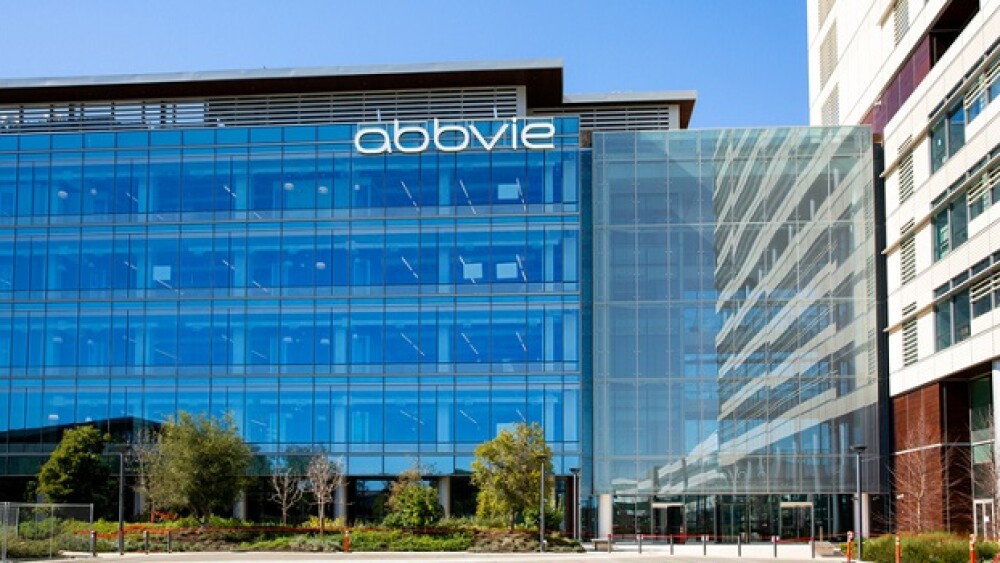Data from the Phase IIb ENLIVEN trial showed 89bio’s pegozafermin met its primary histology endpoint in NASH patients, giving the company an edge in the competitive space.
Pictured: Researchers in lab/Getty Images
Data from the Phase IIb ENLIVEN trial showed 89bio’s pegozafermin met its primary histology endpoint, reducing fibrosis in a quarter of patients with nonalcoholic steatohepatitis (NASH), the company announced Wednesday.
At the 44-mg dose, given once every two weeks, pegozafermin induced at least a one-stage improvement in fibrosis without worsening other NASH symptoms in 27% of patients. Meanwhile, 26% of those given a weekly 30-mg dose reached this endpoint. In the placebo group, only 7% saw such an improvement.
Pegozafermin also led to significantly better rates of NASH resolution without the worsening of fibrosis. In the 44-mg and 30-mg dose groups, 26% and 23% of patients achieved this endpoint, respectively, compared with 2% in those receiving a placebo.
Company shares surged 47% in reaction to the data drop.
In an investor call Wednesday morning, Hank Mansbach, chief medical officer at 89bio, said that on a placebo-adjusted basis, pegozafermin “compared very favorably” to other NASH drugs in development.
For example, in 89bio’s trial, pegozafermin was about 3.5 times better than placebo, while Madrigal’s data showed its resmetirom was superior to placebo by 1.7 to 1.9 times. Novo Nordisk’s semaglutide had an effect 1.3 times stronger than placebo, while Intercept’s ocaliva had a placebo-adjusted drug-response estimate of 2.3.
“Since trial designs and biopsy reading methodologies are different, looking at the drug response relative to placebo response within a trial may offer meaningful insights,” Mansbach said.
Nevertheless, because of these differences in protocols, conclusive cross-trial comparisons cannot be made. So far, no head-to-head clinical trials have been conducted.
Pegozafermin is an engineered glycoPEGylated analog of the hormone fibroblast growth factor 21, which plays an important role in processes such as lipid metabolism, glycemic control, triglyceride reduction and fibrosis.
Aside from fibrosis and NASH disease activity, ENLIVEN also looked at liver fat and other key non-invasive metrics of liver inflammation, documenting statistically significant changes in these parameters after pegozafermin treatment. The candidate also improved levels of HbA1c and lipid markers.
As for safety, pegozafermin had an adverse event profile that was consistent with what had been reported in prior studies, Mansbach said during the call. The candidate was well-tolerated with few gastrointestinal side effects, most of which were grade 1 or 2. The most common toxicities were diarrhea, nausea, injection site erythema, injection site rashes and increased appetite.
One patient experienced a drug-related serious adverse event—an episode of uncomplicated pancreatitis—and five out of 192 dropped out of ENLIVEN due to side effects. This safety profile was “consistent with other NASH studies,” Mansbach said.
A Race to the Finish
In December 2022, Madrigal released Phase III data from the MAESTRO-NASH study showing that its resmetirom was effective and safe in NASH. As with pegozafermin, Madrigal’s candidate also had low study discontinuation rates, ranging from 2.8% to 7.7% across the study’s three treatment arms. Gastrointestinal events were also the most frequently observed side effects of resmetirom.
In January 2023, ChemomAb’s CM-101 aced its Phase IIa study, demonstrating high levels of efficacy and safety. In particular, the candidate induced no significant injection site reactions and did not lead to high titers of anti-drug antibodies. Most of CM-101’s side effects were mild and the single serious adverse event documented was deemed unrelated to the drug.
Joining these companies in the NASH race are Akero Therapeutics, which is eyeing a Phase III study for efruxifermin later this year, and Hepion, which is leveraging AI in its drug development efforts.






